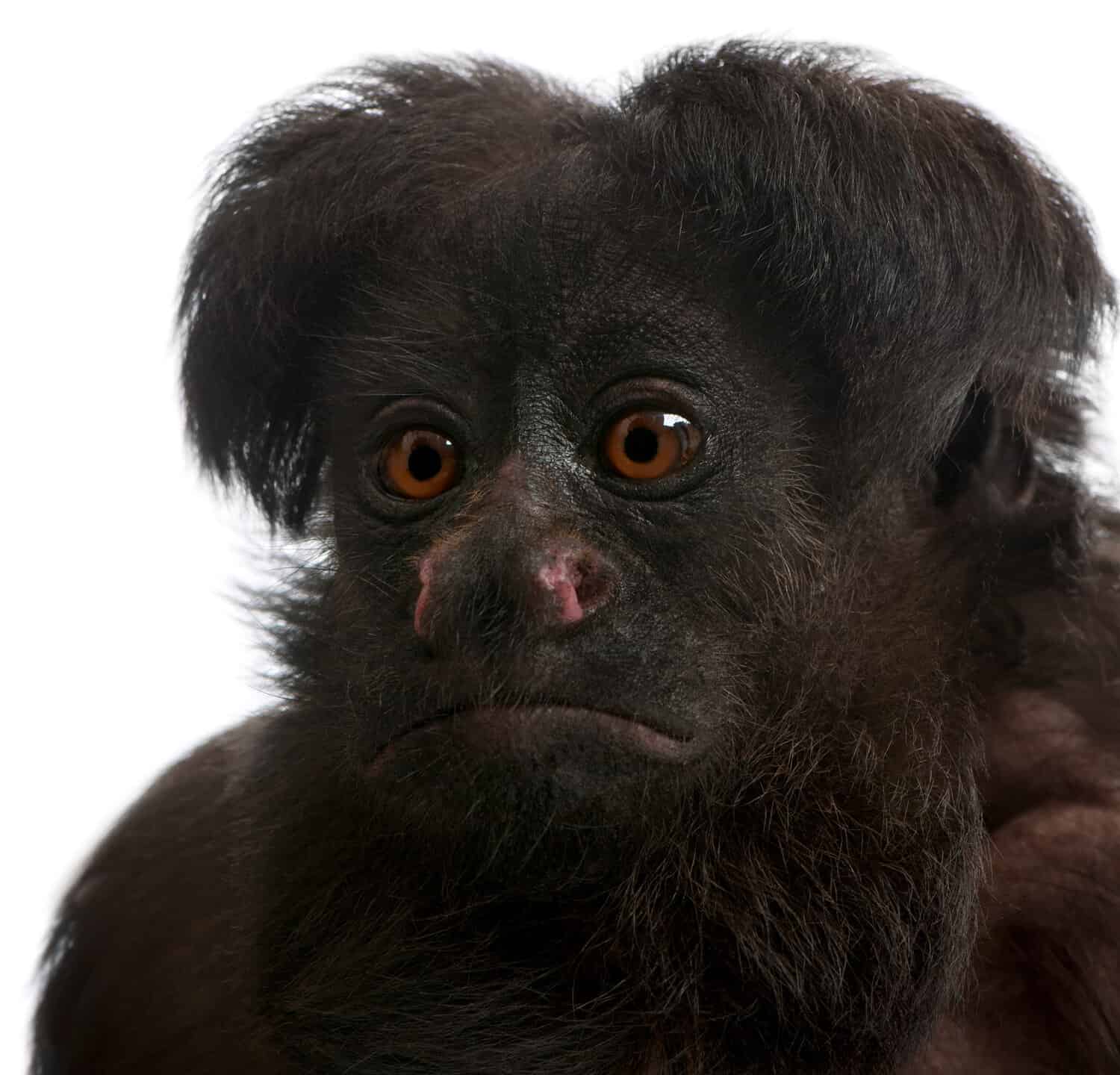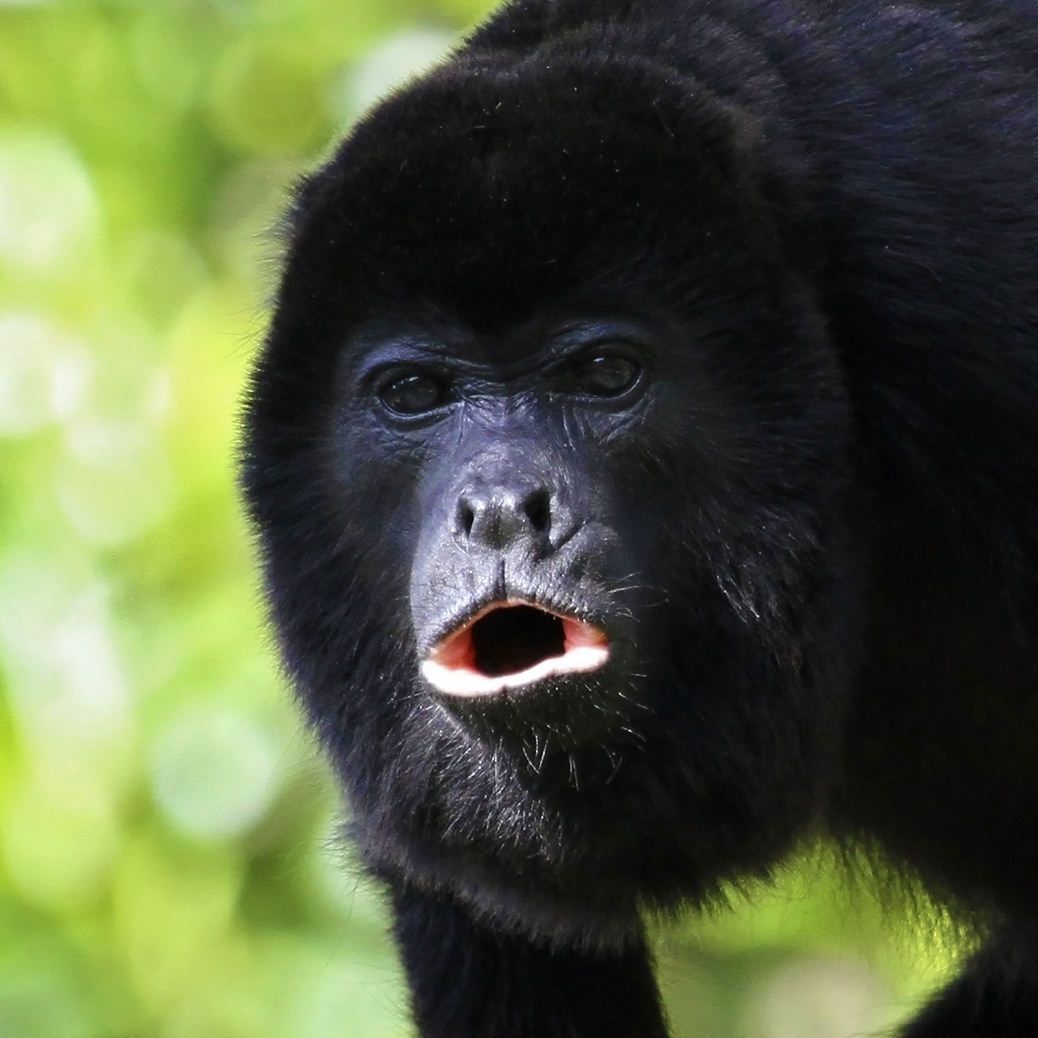Discover The Black Howler Monkey: Facts & Info
What is the most evocative sound of the South American rainforest? The resounding roar of the black howler monkey, a creature whose vocalizations can travel for miles, is a defining characteristic of these lush landscapes. These remarkable primates, the largest monkeys in the New World, command attention not only with their impressive calls but also with their striking sexual dimorphism and complex social structures.
From the dense jungles of the Amazon basin to the montane forests of the Andes, black howler monkeys (Alouatta caraya) have carved out a unique niche. Their booming calls, often mistaken for the roar of a jaguar, serve as both a territorial declaration and a social glue, binding together the intricate dynamics of howler monkey society. These calls, emanating from an enlarged hyoid bone, a unique skeletal structure in the throat, are a testament to the evolutionary adaptations that have allowed these primates to thrive in the competitive rainforest environment.
| Scientific Name: | Alouatta caraya |
| Common Name: | Black Howler Monkey |
| Family: | Atelidae |
| Distribution: | Paraguay, Southern Brazil, Eastern Bolivia, Northern Argentina, Uruguay, parts of Peru, Brazil, and Bolivia within the Amazonian and Madeiran forests. |
| Habitat: | Primary and secondary rainforests, montane forests (up to 3350m) |
| Diet: | Primarily leaves, supplemented with fruits, seeds, flowers, and bark. |
| Size: | Males: 6.7 kg (average), 15-22 lbs; Females: 4.4 kg (average), ~12 lbs |
| Conservation Status: | Least Concern (IUCN), though populations are declining in some areas due to habitat loss and hunting. |
| Unique Features: | Large hyoid bone amplifying vocalizations, prehensile tail, sexual dimorphism (males black, females blond) |
For further information, please visit the IUCN Red List website.
The striking difference in appearance between male and female black howlers adds another layer of intrigue to their story. While both sexes are born with blond fur, males undergo a dramatic transformation as they mature, their coats darkening to a rich, ebony black. This stark contrast with the females' golden fur is a prime example of sexual dimorphism, a phenomenon observed in many primate species. The size difference between sexes is also significant, with males being considerably larger and heavier than females. This difference in size is believed to be linked to competition for mates and resources.
Black howler monkeys are highly social animals, living in troops that typically consist of a dominant male, several females, and their offspring. A fascinating aspect of their social behavior is the practice of allomothering, where females share the responsibility of caring for young, even those that are not their own. This cooperative parenting strategy contributes to the overall well-being of the troop, increasing the chances of survival for the young monkeys.
While their diet consists primarily of leaves, more so than any other New World monkey, they also supplement their diet with fruits, seeds, flowers, and bark. Interestingly, despite their leaf-heavy diet, black howlers lack the specialized stomach often found in other leaf-eating primates. Their digestive system, however, is highly efficient at extracting nutrients from this fibrous food source.
The prehensile tail, a defining characteristic of many New World monkeys, is a vital adaptation for the arboreal lifestyle of the black howler. Acting as a fifth limb, it allows them to navigate the complex canopy with remarkable dexterity, freeing their hands for foraging and social interaction. The underside of the tail tip is naked and features unique ridges and grooves, providing an enhanced grip for grasping branches and objects.
Despite their impressive size and vocal prowess, black howler monkeys face increasing threats from habitat loss and hunting. As forests are cleared for agriculture and other human activities, these primates are losing crucial territory, impacting their ability to thrive. In Belize, where they are mistakenly referred to as "baboons," black howlers are particularly vulnerable to hunting. Conservation efforts are essential to protect these magnificent creatures and ensure their continued presence in the rainforests of South America.
From their dawn chorus that reverberates through the jungle to their cooperative social structures, black howler monkeys embody the intricate web of life that defines the South American rainforest. Understanding their biology, behavior, and the challenges they face is critical to safeguarding these unique primates and the vibrant ecosystems they call home.



Detail Author:
- Name : Ismael Morar
- Username : marquardt.elsa
- Email : korey37@stark.org
- Birthdate : 1991-09-15
- Address : 22956 Miller Square Bogisichburgh, OH 65766-5141
- Phone : (727) 418-0807
- Company : Cassin-Davis
- Job : Log Grader and Scaler
- Bio : Voluptas libero dolorem fugit quis velit iusto voluptatum. Aut quo veniam repellat. Voluptatem sed quidem in et architecto. In sit nesciunt accusantium.
Socials
tiktok:
- url : https://tiktok.com/@grimes2005
- username : grimes2005
- bio : Vel nesciunt odio sed cupiditate possimus. Illo vel architecto quae nam ut ea.
- followers : 4291
- following : 2900
facebook:
- url : https://facebook.com/cgrimes
- username : cgrimes
- bio : Rerum mollitia in et aut. Ad et est neque sit enim blanditiis sit sit.
- followers : 5619
- following : 1606
twitter:
- url : https://twitter.com/carol.grimes
- username : carol.grimes
- bio : Dolorum magni explicabo velit atque error et aspernatur dolores. Fuga qui quis odit. Quisquam repellat minima quas sunt.
- followers : 7000
- following : 2194
instagram:
- url : https://instagram.com/carol_dev
- username : carol_dev
- bio : Id et ducimus sed nisi dolorum. Enim vel delectus sit. Nesciunt rerum fuga quam magni.
- followers : 3406
- following : 2186